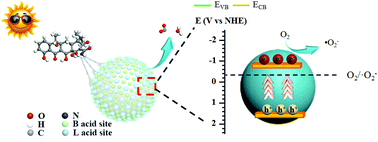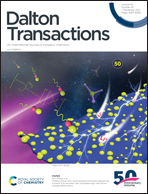Probing the role of surface acid sites on the photocatalytic degradation of tetracycline hydrochloride over cerium doped CdS via experiments and theoretical calculations†
Abstract
Surface acid site regulation of photocatalysts is a promising strategy to improve their performance. Herein, surface acid sites of cadmium sulfide were rationally regulated by cerium doping, which resulted in significantly increased photocatalytic activity for tetracycline hydrochloride (TC-HCl) degradation. The generated Brønsted acid sites were verified to favor the adsorption of organic molecules because of their strong affinity. Meanwhile, Lewis acid sites acted as the active sites for C–C bond cleavage via a nucleophilic substitution process, which was testified by the Fukui function and electrostatic potential. Besides, Ce3+ doping suppressed the recombination of electron–hole pairs, which also boosted the performance of TC-HCl degradation. Moreover, the degradation pathway of TC-HCl was deduced based on theoretical calculations and HPLC-MS results. The toxicity of pollutants and intermediates was also evaluated. This work provided new insight into the rational design and preparation of highly efficient photocatalysts for environmental purification.



 Please wait while we load your content...
Please wait while we load your content...